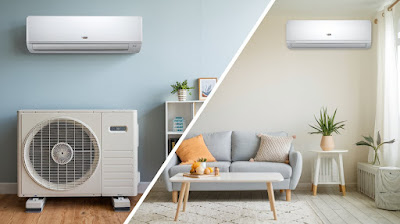Choosing an air conditioner is a decision that influences comfort and energy consumption in everyday life. Among the options available on the market, conventional devices and models with inverter technology present significant differences, both in terms of efficiency and savings. Understanding these differences helps you decide which option is more worthwhile to meet your needs.
1. Compressor Operation
In conventional devices, the compressor works intermittently: it turns on and off in cycles to reach and maintain the temperature. In the inverter model, the compressor automatically adjusts the speed to maintain the desired temperature, without having to constantly turn it on and off. This continuous control allows for more uniform air conditioning and reduces wear and tear on the equipment, increasing its durability.
2. Energy Consumption
One of the main advantages of inverter air conditioning is energy savings. Since the compressor works continuously and adjustable, consumption is reduced by up to 40% compared to the conventional system, which consumes more energy in the on and off cycles. Therefore, for those who use air conditioning frequently, the inverter model tends to offset the higher initial investment with savings on the electricity bill over time.
3. Noise Level and Comfort
Another important difference is the noise level. The inverter air conditioner is generally quieter, as the compressor works at a constant and adjusted speed, while the conventional model can make louder noises when turning on and off. This makes the inverter an ideal option for environments where silence is important, such as bedrooms and offices.
Conclusion
Although the conventional air conditioner is still a viable alternative, especially for those who use the device occasionally, the inverter model stands out in energy efficiency, comfort and durability. The higher initial investment of the inverter is offset by the energy savings and lower noise level, making it a worthwhile choice, especially for frequent use. Evaluating the frequency of use and the specific needs of the environment helps you choose the model that best meets your expectations.
